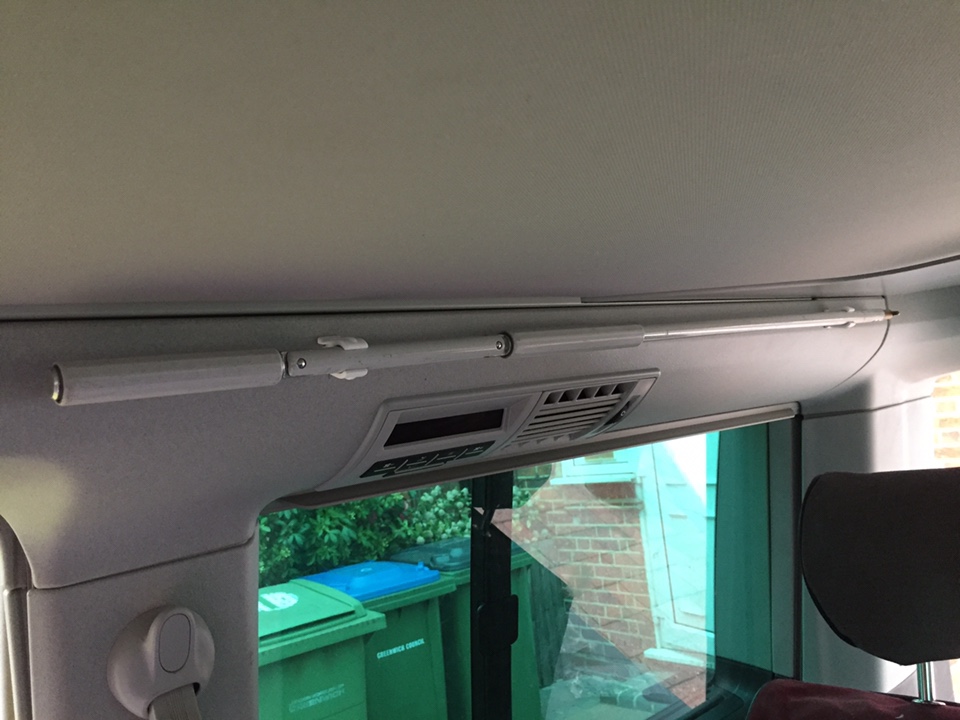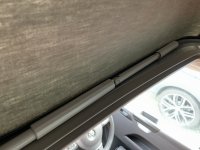I've previously described myself as a DIY incompetent, which I have defined as, given any DIY project I'm more than 50% likely to make things worse than before. However, I've had a pretty good run, with successfully making plywood boxes and successfully hardwiring my compressor fridge so it can be plugged in behind the front passenger seat, in the boot and external to the van.
I was pretty optimistic about being able to electrify my awning. But pride can come before a fail, and what a fail it was to be!
I found a small 36 volt, 250 watt, motor on ebay, designed for use on children's electric scooters.
By moving the rear awning support arm it could be bolted onto the inside cavity of the awning casing. The 2750 rpm speed could be geared down to something more sedate. And that was another good reason for choosing this motor. Reversible gears 8:1, 4:1 or 2:1 could just be clipped on or clipped together, the opposite way around for 1:8, 1:4 or 1:2 ratios. I bought three 8:1 ratio and one 4:1 ratio gears.
I also bought a 12 volt to 36 volt step up converter.
The easy bit was wiring up the converter, the input with an Anderson SB50 connector, and the output with an SB175, the different size connectors so there is no chance of plugging the 12 volt fridge into 36 volts!
Without bolting anything to the awning casing, I rigged up a test. I plugged the step up connector into the 12 volt feed in the boot toolbox, then plugged the motor into the 36 volt output. All worked well with the motor merrily spinning at 2750 RPM or so. I then ran into my first obstacle - I didn't have sufficient electrical lead to take the motor around to the awning. I rigged up an extension lead using my 50m orange lawnmower extension lead, by taking off the plug and socket and fitting SB175 connectors each end.
I now had a 36 volt motor which I could operate from the leisure battery up to 50 metres from the van.
I was ready to test the rig on the awning.
I clipped the three 8:1 and one 4:1 gears to the motor to reduce the 2750 revolutions to a more sedate 1.3, reckoning that 1.3 cranks per second would be about right. I then clipped my makeshift crank end onto the gears, and into the awning end, asked Ben to plug into the step up converter in the boot, and the motor buzzed merrily and nothing else happened. I checked all components carefully and all was correct, tested again, and nothing happened except a very slow turn of the crank.
I had geared it to 1.3 turns per minute. I was aiming for 1.3 per second. This damn awning was going to open more slowly than my 12 volt kettle takes to boil...
Appalled with my basic of basic errors, I unclipped the entire rig. I re-clipped two 8:1 gears and the crank end for 43 rpm - about two turns every three seconds. What I did not know at that stage is I had clipped on one of the 8:1 gears in reverse, so I had an 8:1 gear and a 1:8 gear - that is a 1:1 ratio. Despite the gears, my rig would be spinning at 2750 RPM.
Ben plugged in the Anderson connectors and the rig span fast, very fast. The unsupported awning lurched open at an angle towards the ground of about 45 degrees, and just when I thought it would surely snap off, went slack before winding itself in the other way. Before I really know what was happening the awning was reeling back in and with a sickening thud closed shut. The force of this closure was to throw me from my feet, and the rig, now unable to wind the awning, was spinning me by my arms at least half a turn ahead of my legs. The 50m power cable trussing me up, until, at last, the cable ran out and the Anderson connectors were torn apart and the spinning stopped. I was left hanging from the awning end like some bloated orange cocoon.
My DIY skills need some honing.








 , I would suggest you to ask WG to come over and give you a hand (ha!). Surely after some beers and bleeps he’ll find a way to save your neck!
, I would suggest you to ask WG to come over and give you a hand (ha!). Surely after some beers and bleeps he’ll find a way to save your neck! 












